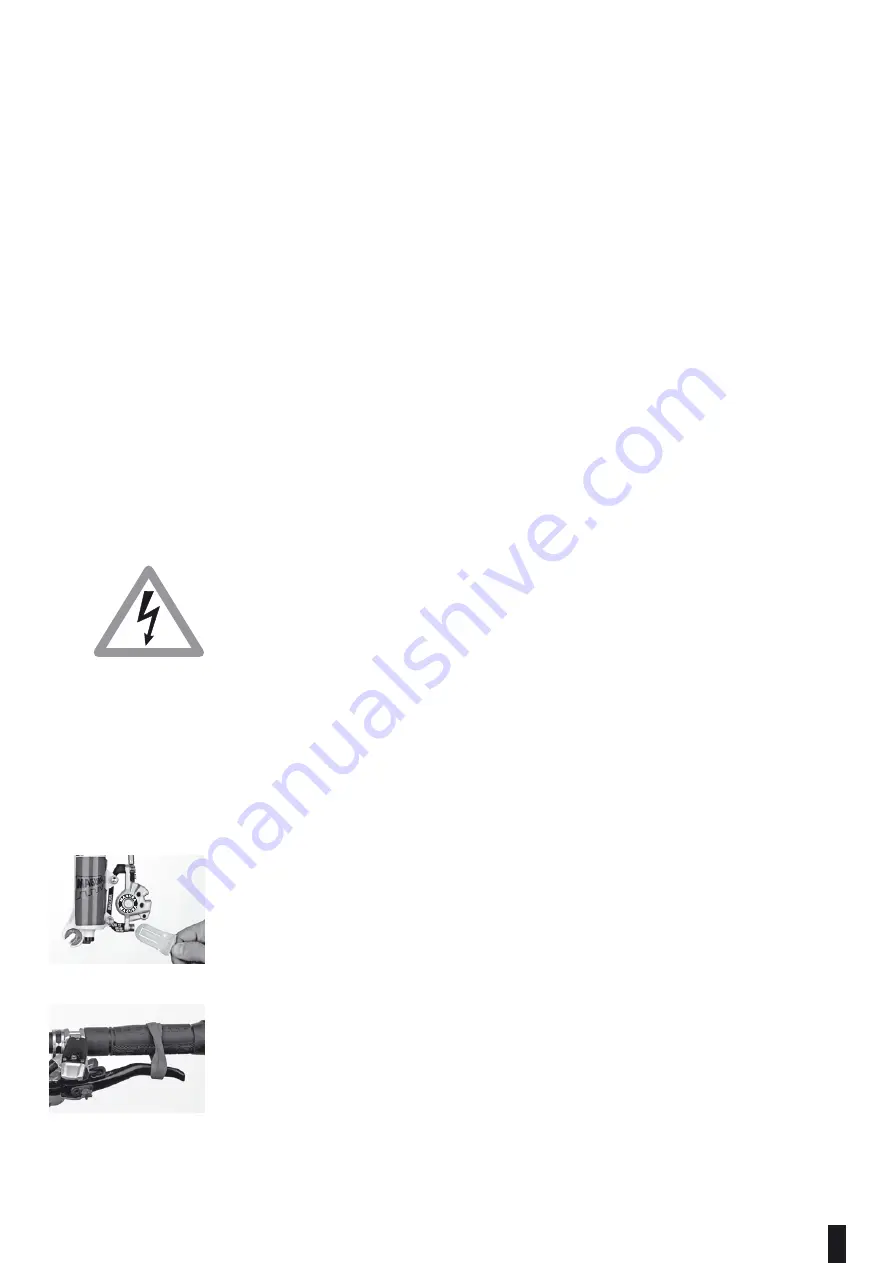
THE PASSION PEOPLE
www.magura.com
6
3
. Always make sure that the brake system does not have any leaks by activating the
lever blade, holding it and checking the hose connections and reservoir cover for eventual
leaks. (Also see page 12)
4.
Always protect your rotors and brake pads from oil and lubricants (e.g. by lubricating
your chain). Avoid detergents and soap on the brake pads.
Contaminating the pads with
oil and lubricants will cause a permanent loss of braking power. Those pads are defi-
nitely killed and cannot be saved. They have to be replaced!
Clean a contaminated rotor
with MAGURA brake cleaner, warm dishwater or alcohol. See further hints about the brake
pad change on pages 13/14.
5
. Release your brake lever and check whether your wheel moves freely and without
drag. Check eventually whether the wheels are correctly mounted and if the quick release
skewers are sufficiently tightened. (Also see pages 8-10)
6.
Are your tires in a good condition, and are they sufficiently pressurized? Test this
with your fingers. Lift up your bike and turn the wheels of your bike. An insufficient rotation
might be due to damaged tires, broken axles and/or broken spokes.
7.
Pick up your bike and let it drop from a moderate height. Be careful in case of any
rattling noise. Check the bearings and all screwed connections.
8.
Always follow the instructions given in the owner’s manual of your bicycle.
Never use your bicycle if ever a proper function of the points mentioned above is
not guaranteed. Consult a professional bike mechanic if you feel
unsure. A faulty bicycle might cause serious accidents with possible serious
injuries for the rider!
In case of a disc brake equipped bicycle you should always keep in
mind the following points:
Never activate the lever blade without the brake pads in place and the wheels
mounted. In case this should have happened see page 11 of this manual.
Never throw away the transport device, which has been delivered with the brake.
Always clip it between the brake pads whenever the wheel is removed (e.g. transport
of the bike).
Always carefully removed wheels. Make sure that the rotors are not damaged, deformed
or contaminated with lubricants.
If the bike is transported upside-down squeeze before the lever blade,
hold pressure and fix the lever blade in this position with a rubber band or
a cable tie as shown on the right photo.
For a transport in an aircraft you can leave your brake as it is, e.g. you do not
have to empty it.
4. Transport of the bicycle







































